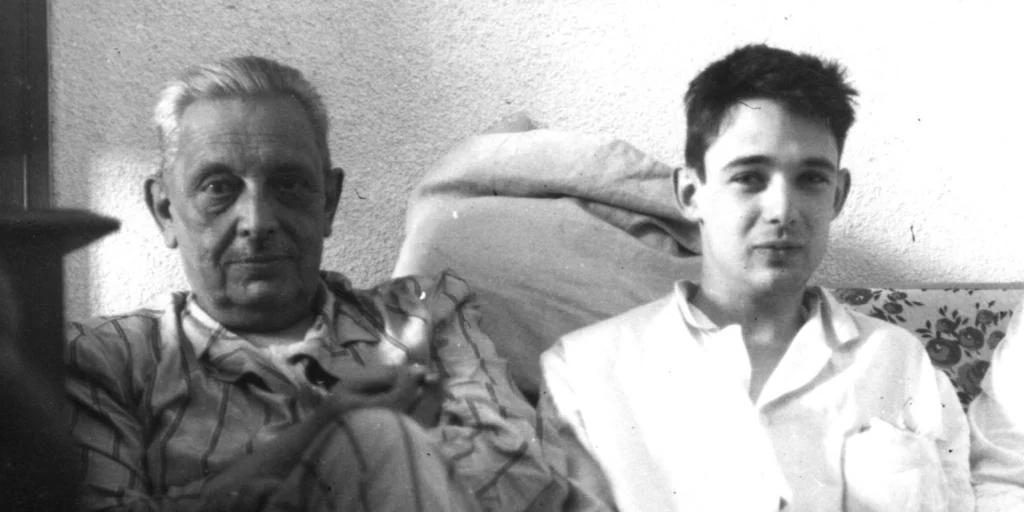
Gioachino Lanza Tomasi’s story is eye-catching. Although he himself was a man with an ear for music, rhythm, libraries, etc., his intimate biography is illuminated by the image of a Spanish mother who knew about embassies and salons and still wanted her. … For his son, a single homeland, a single language. The decision to never let the children learn their native Spanish, perhaps made with the wisdom of another era, left a tight thread in the Palermo household. Spain remained in the object, not in the mouth. it remained on my waist lopeof Quevedoof Calderon;The familiar motto “In fide et iustitia” affixed to the library tag. It remained in the quiet portrait of the woman, and in the way the curtains were opened so that the light would not damage the oil painting.
Gioacchino grew up in that sidelight, and for him Spain was at first a tactile geography: the dry relief of golden letters, the fine dust caused by old pages, the quiet music of the titles. Meanwhile, language remained closed off like a fenced garden. It was not a cruel prohibition. It was caring: Mother –Maria Concepción Ramírez de Villa Urrutia, Conchita, Countess of Asaro– He believed that he saved his son from the tearing apart of borders by teaching him only one language: the language of the home, the language of Palermo, and the language of his father. But underground rivers always find a way out. Spain then returned for recitations, with Lampedusa as tutor, governess, and eventually adoptive father. The reading prince taught him how to see things in private lessons, and together with him, Gioachino learned that there are countries where people travel by reading. Out of all that came a delicious little book called “.Lampedusa and Spain‘.
The first public appearance of this book was in Italian. In May 2024, the Serario Editor Palermo introduced the book as a “critical affassinante”, highlighting the dual profile of an intimate portrait of Palermo on Lampedusa and a small text by Gioacchino Lanza Tomasi himself, “Romanzo di Formagione”, which reconstructs an afternoon of Spanish reading with his teacher and adoptive father. The cover features a thick photo of his mother Conchita in Val Proust. It not only shows the elegance of the world. Point out the rumored inheritance that Gioacchino will receive.
This Italian method of cartography found Spanish echoes just a year later. Acantilado is currently publishing “Lampedusa and Spain.” This book arrives in translated version Andres Barba MunizIts literary strength and affinity with the catalog’s European tradition allow the memorial pulse of Lanza Tomasi to breathe in Spanish with the same precision as the original.
Viewed together, Celerio and Acantilado follow a consistent editorial line from the Lampedusa novelists to the Lampedusa readers of Lope, Góngora, Calderón, and Quevedo. As a result, the portrait was enlarged rather than simply reissued, confirming that this Sicilian-Spanish dialogue is still alive.
In that sense, as some critics have suggested, “Lampedusa and Spain” is a portrait revealed by slow exposure, in which the dark room is the dark room of memory. Giuseppe Tomasi di Lampedusa and Gioacchino, the photographer’s son. This volume proceeds not by systematic demonstration but by the accumulation of flashes of anecdotes, preferences, and vessels of communication. His humility is his strength.
His center of gravity is on the island of Lampedusa, and he is a great person who is an avid reader of the Spanish tradition. golden age And already in the 20th century, especially Lorca. Lanza Tomasi points out the brilliant tension. For Lampedusa, Spanish represents courtesy and conclusion, a counterpoint to the rhetoricalism he perceived in civilized Italian. The idea, although hardly mentioned, reorganizes the table of work of the author of “Leopard”. That means reading Spanish to learn ideas of form. In the interior of Palermo, Lampedusa established a method of reading and teaching people how to read. Collect books like you’re redoing a house.
Having learned to love the untaught language, Gioacchino lived through Spain through the rhythms of language. The library still exists within the palace. On the bookshelf, his Spanish mother’s library card repeats his motto.in truth and justice‘. Faith for what we have received, justice for what we have not earned. This story moves between that faith and that righteousness. Italy by plan, Spain by desire, and between them there is a paper bridge built by a book that measures time.



